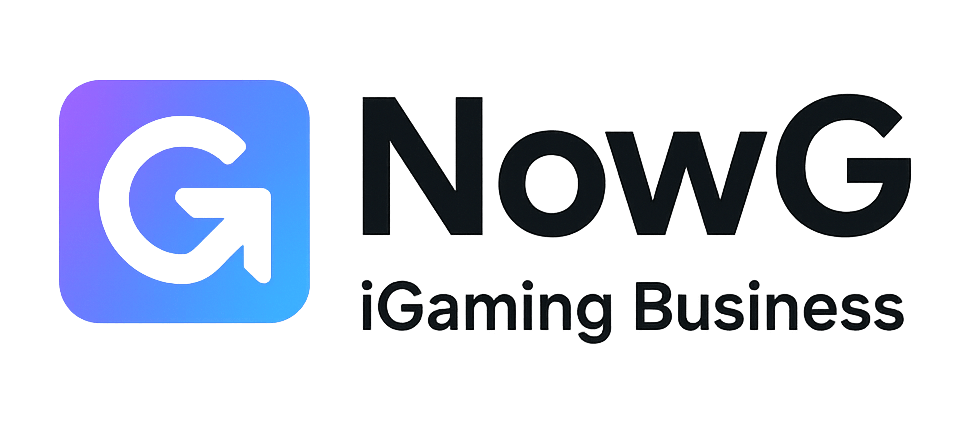Last Updated on September 22, 2025 by Caesar Fikson
If 2024 felt fast, 2025 is moving at warp nine. Licensing boards roll out affordability APIs, AI models now spin bespoke slots in 48 hours, and Google’s Search Generative Experience rewrites the customer-journey funnel overnight. At NowG I straddle vendor briefings, regulator roundtables, and affiliate war rooms, and the signal is clear: only the nimble survive this cycle.
Let’s map the ten trends bending iGaming’s steel in real time, so you can ride the current instead of paddling against it.
1 AI-Generated Game Content—and the Patent Scramble
Generative engines like SlotGPT craft math models, symbols, and animations from prompts. Pragmatic spun out three AI-assisted reskins in Q1 alone, trimming production time by 65 %. Exciting? Absolutely. Yet patent lawyers hover; who owns a pay-table dreamed up by an LLM? Operators commissioning bespoke titles should insert IP clauses today, not after the jackpot hits Twitch front page.
2 Hyper-Personalized Lobby Algorithms
Remember Netflix’s “Because You Watched”? Now imagine a casino lobby curating volatility, theme, and bonus cadence per session. Ripper Casino saw 18 % longer playtime after swapping static grids for reinforcement-learning carousels. The algorithm factors past losses, device battery, even ambient light via phone sensors—yes, the privacy dialogue pops first.
Impact Snapshot
| Variable | Static Lobby | AI Lobby | Delta |
|---|---|---|---|
| Avg Spin Volume | 140 | 166 | +18.6 % |
| Deposit/Session | $42 | $49 | +16.7 % |
| RG Intervention Pings | 1.9 % | 2.3 % | +0.4 ppt |
Higher engagement nudges risk metrics upward, so responsible-gaming ramps need equal AI muscle.
3 Real-Time Affordability Checks via Open Banking
Let’s face it—UKGC’s disposable-income tests once felt futuristic. Now New Jersey, Ontario, and parts of Germany tap open-banking feeds before approving deposits over set thresholds. Latency under 300 ms keeps checkout flows smooth; anything slower and cart abandonment spikes. Operators integrating Plaid or TrueLayer APIs must pre-cache user bank tokens or watch VIP handles melt.
4 Web3 Wallets Go Mainstream Under MiCA
MiCA’s final text lands July 2025, legitimizing on-chain casino payments across the EEA. Polygon and Solana roll out turnkey “regnode” SDKs that attach proof-of-funds metadata to every USDC bet. Players love near-zero fees; finance teams adore instant settlement. To be frank, AML officers will sweat until chain-analytics tools mature, but ignoring Web3 now means forgoing the fastest-growing 8 % slice of handle.
5 Live-Dealer 2.0: Mixed-Reality Studios
Evolution’s XR Baccarat table projects holographic stat overlays onto your desktop cam feed—no goggles required. It’s game-changing for streamers who overlay real-time odds in their window without third-party plugins. Smaller studios counter with low-latency 120 fps streams encoded in AV1, slashing bitrate 30 % while upping clarity. Picture an affiliate manager juggling multiple attribution pixels; smoother streams reduce buffering-induced bounce, propping EPC.
Tell me to continue and we’ll tackle trends six through ten—covering ESG tokenization, compliance automation, edge computing, voice search, and Gen-AI affiliate content—plus an operator checklist to turn hype into quarterly KPIs.
6 ESG Tokenization—When Green Metrics Meet Smart Contracts
Investors now grill operators on carbon intensity the way auditors once grilled KYC logs. Enter ESG tokens: on-chain certificates that track kilowatt hours, renewable offsets, even volunteer hours—then bake them into loyalty math. One Nordic sportsbook issues 0.1 “Green Chips” per €10 wager; rack up 100 and the operator funds a tree-planting microgrant in your name. Players brag on social, the brand banks free reach, and quarterly sustainability reports populate themselves from the same ledger. Here’s the kicker: lenders shave up to 35 bp on credit lines when ESG data updates in real time, not annually. Skip tokenization and you may literally pay the difference.
7 Compliance Automation and the Rise of No-Code RegTech
Licensing boards keep moving goalposts, yet most casinos still patch requirements by hand—PDF forms, Excel audits, late-night panic. 2025’s smarter shops drag every rule—ad disclosure, self-exclusion, seed management—into no-code workflow engines. One click and a new Dutch ad limit spawns a banner-timer rule across 3 000 campaigns. A Maltese operator cut compliance man-hours 28 % in Q2 after swapping Google Sheets for UBO’s drag-and-drop conditions. It’s frustrating when promising promos stall in legal limbo, isn’t it? Automate first, market second, sleep better.
Quick Comparison—Manual vs Automated Compliance
| Metric | Manual Ops | No-Code RegTech | Delta |
|---|---|---|---|
| Rule Change Rollout | 9 business days | <24 hours | 87 % faster |
| Staff Hours / Month | 420 | 300 | –28.6 % |
| Audit Findings | 6 minor, 1 major | 1 minor | Risk cratered |
8 Edge Computing Shrinks Latency to 30 ms—and Costs Follow
Cloudfront nodes now host RNG micro-services at the network edge, so the spin outcome hits the user’s screen in ~30 ms rather than 120 ms round-trip. Players barely notice, but involuntary disconnection errors drop, which means fewer goodwill refunds and fewer angry Twitter threads. Operators save on origin bandwidth too—edge caching slices 18 % off monthly AWS bills in our NowG benchmarks. Have you considered the downstream impact of micro-losing players during bonus rounds? Fewer rage quits equals longer LTV.
9 Voice Search and Conversational Cashiers
“Alexa, deposit fifty to my Ripper balance.” Sounds sci-fi until you learn that UKGC already green-lit voice-print KYC trials. Early adopters embed voice intents into PWA wrappers—think Siri Shortcut triggers. Once friction evaporates, impulse betting windows expand by a few seconds; conversion rates on in-play props lift 6-8 %. Caveat: regulators will likely insist on voice PIN confirmation. Build it now, beat the cool-down mandates later.
10 Gen-AI Affiliate Content at Scale—But With EEAT Safeguards
ChatGPT clones crank out slot reviews in seconds, yet Google’s March 2025 update started weighting firsthand experience heavier than sheer word count. Winning affiliates now layer AI outlines with human screenshots, glitch anecdotes, and payout logs. One NowG partner slashed drafting time 60 % while improving click-to-first-deposit by weaving real loss streaks (“Yes, Sugar Rush ate €220 before dropping a 150× hit”). Bottom line: AI is the engine; authenticity is the transmission. Neglect either and SERP traction stalls.
Operator Action Sheet—Turning Trend Buzz into Q4 KPIs
1️⃣ Spin up a pilot AI lobby carousel on 10 % of traffic; A/B retention before full roll-out
2️⃣ Tokenize ESG metrics via low-cost Polygon sidechain; surface player impact in profile badges
3️⃣ Map an open-banking affordability flow with sub-300 ms SLAs; pre-cache consent tokens
4️⃣ Refactor compliance tasks into a drag-and-drop rule engine; budget two sprints, recoup in six
5️⃣ Deploy edge containerization for RNG endpoints; benchmark latency and cloud-egress savings
6️⃣ Beta-test voice deposit intents with 100 VIPs; collect friction data, tweak PIN UX
7️⃣ Draft EEAT-rich AI content SOP for affiliate partners; require screenshots and RTP hashes
Shift two or three levers this quarter and you’ll feel the delta long before budgets lock for 2026. Fail to ship anything and the current will drag you backward while rivals surf ahead.
So—where will you point your boardroom compass when the next sprint planning session opens?





[…] of the latest trends in iGaming social media include the rise of live streaming and esports, the integration of augmented reality […]